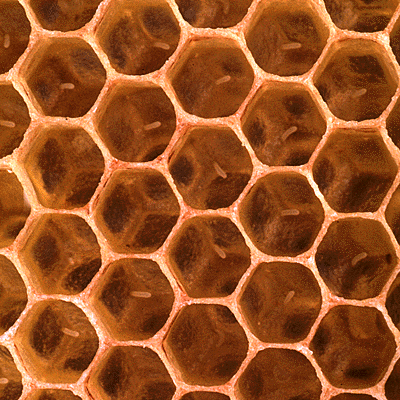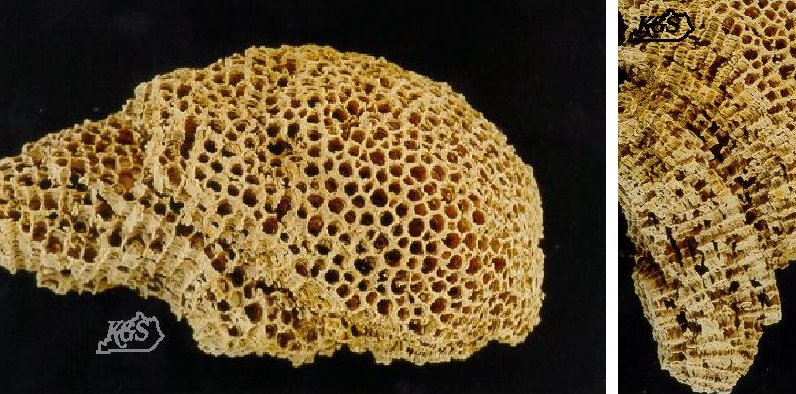

THE LEAF CUTTING ANT (PARASOL ANTS)
We have in this example, another phenomenal illustrative piece on the helplessness of the evolution theory to explain observable facts.
These are observable, have been observed, and there is no guesswork or speculation involved. The whole mechanism sprang full blown to birth, or it couldn’t have happened at all. Judge for yourselves.
The parasol ant is a real pest to farmers and causes a lot of damage to crops, because the foraging ants go out in numbers, cut large amounts of leaf material off crop plants, and this costs money.
They go forth, cut the leaves with their specially constructed jaws, and carry them back to their nests. They climb trees up to 100-feet tall and cut out small pieces of leaves. They then carry these fragments, weighing as much as 50 times their body weight, back to their homes. Sometimes they must travel 200 feet, equal to an average human walking about 6 miles with 5,000 lbs. on his/her back! The forest floor is converted to a maze of busy highways full of these moving leaf fragments.
They travel a distance equivalent to a 6 foot man walking 5 miles in a forest. So how do they get home? Incredibly, they leave a trail of pheromone-like substances on their trails.
Back at the nest, the marvels begin. The ants were once thought to use the ‘parasols’ as covering to shield them from the rain. That, however, is not the case.
The leaf cutters take the material back to their nests, and there, in specially designed underground chambers, cut them up into minute little pieces, spray them with excrement, saliva, and then plant a particular species of fungus on the decaying material.
But that is not the whole story.: http://www.apologeticspress.org/articles/2627
"Incredibly, the ants do not eat the leaves. Rather, they cultivate miniature gardens of fungus on pieces of leaves. which they chew and then store in underground compost piles.
Several million ants usually inhabit their colonies, and the garden chambers can extend as deep as twelve feet underground.
In order to fulfill all the needs of the colony, the ants divide the work among classes. Each class of workers is designed to do a special job. The biggest ants have powerful jaws to cut leaves, flower petals, and blades of grass. They bring these big pieces back to the nest where slightly smaller workers cut and dice the plant material into tiny lumps. The smallest workers chew these up into balls, adding bits of fungus. The ants’ saliva contains ingredients that help the fungus break down the plant material, and also kills harmful bacteria and other fungi.
Small workers strip off wax and other parts of the plants that the fungus cannot use. Workers dump this refuse into special waste chambers. The relationship between the ants and the fungus is symbiotic, meaning that both benefit. The fungus benefits because the ants feed it, protect it, and spread it from place to place. In return, the fungus grows a clump of special hyphae. Each clump is like an instant three-course meal, which the smallest ant workers use to feed the larvae."
This is the only fungus the ants eat and feed the larvae on.
You may recall the difficulties faced when researchers attempted to cultivate the Penicillium fungus in order to produce penicillin in the World War. Fleming, Florey and Chain were awarded Nobel prizes for their discovery (Fleming), extraction and purification of the antibiotic (Chain and Florey). Here are ants who have 'discovered' the single species of fungus that suits them, and 'developed' effective cultivation methods of the fungus.
They have 'discovered' how to obtain and produce the the right composting medium for its growth. They maintain the correct temperature for it's cultivation and growth. Instinct, you see. Perhaps they too should be awarded the Nobel prizes for the animal world!
When the young queen leaves the nest, she takes a piece of the fungus with her to act as seeding material!
While Mueller and Schultz worked on the ants’ relationship to fungi, a team of biologists at the University of Toronto were noting—and wondering about—the presence of a persistent and ravaging mold, called Escovopsis, in attine gardens. How was it, they asked, that this potent parasite didn’t regularly overrun the attine nests? Taking note of a white powder on the undersides of the attine ants, they ultimately identified it as a type of bacteria, Streptomyces, that secretes antibiotics. The antibiotics were keeping the Escovopsis at bay. More important, they were doing so over long periods of time, without the Escovopsis becoming totally resistant.
Evolution cannot account for the origin of this complex organisation, biochemistry, specific knowledge of fungal cultivation, specific knowledge of fungal identification, pre-programmed behaviour patterns of the workers, reccognition of which parts are waste, knowledge that a piece of fungus will act as a cutting which could be used to propagate the only fungus they eat, the scissor like jaws which do the leaf-cutting, the selection of proper leaves which can be used as their composting material, the production of the pheromone-like ‘scent’ which marks their tracks – all this and more.
At every step of their discovery process, error would have caused the extinction of the species. Recall that this is the only species of fungus that they eat.So if they got that wrong, species extinction would have taken place.
Which raises another of these curious anomalies. If this is the only fungus they eat, and this is the only way that the fungus is propagated, then which came first? The ant, or the fungus? The ant depends on the fungus, and the fungus depends on the ant, like the old lock and key analogy. Without the lock, the key is useless, and without the key, the lock is equally so.
Consider the number of individual pieces of instinctive behaviour the ants exhibit, and ask yourself, how did these a. start and b.get into the genome?
1. They know they have to eat. Where did that come from?
2 They can walk. Where did that come from?
3 They have leaf-cutting jaws. Where did that come from? And where did the instincts powering the use of those jaws come from?
4 They 'know' that they must go cut the leaves. Where did that come from?
5 They know they must bring it back to their nest. Where did that come from?
6 They know they mustn't eat the leaves. Where did that come from?
7 They know they have to chew them up and make compost with them. Where did that come from?
8 They know they must excrete on the chewed up leaves to make the compost. Where did that come from?
9 They know they must place spores of the fungus on the compost. Where did that come from?
10 They know how to keep the nest clean, and how to tend the 'gardens' of fungus. Where did that come from?
11 They know how to make tunnels, and keep them at the correct temperature and wetness. Where did that come from?
12 They know that the fungal hyphae must not be eaten. Where did that come from?
13 They know the fungal fruiting bodies are edible, and they eat those. Where did that come from?
14 There is a whole social stratification of ants in the nest. Queen, workers which do one thing, and workers which do another. For example, the leaf-cutting ants cannot chew the leaves up and make the compost. There are smaller ants whose jaws are designed for that purpose.
This is a leaf-cutter. Observe the size of the jaws.


The above are workers creating the compost. Note the small size of the jaws.
15 There are a very large number of other behaviours we could ask the same question about. But the next most remarkable is the fact that when a young queen flies off to start a new colony, she invariably carries a piece of the fungus with her to act as the seed for the new gardens. There is clear purpose in her doing so - but she has a brain the size of a pinhead.
If she didn't do this, she and the species would perish, since new colonies could not form, and the old ones would eventually die out. Species extinction would be the result.
Also note that the eggs she lays, and which hatch out, produce workers (and some males). The workers do NOT need instructions in constructing the fungus gardens, cutting the leaves, and all the other required behaviours. So, the information is somehow programmed into their genes.
'Somehow' is the leading word here. How? And how did it all begin?
As we can clearly see, it's all or nothing. It either worked first time, or the species perished. Since the ant is with us here today, then it worked. First time.
That is a description of an act of creation, not evolution.
The instincts, ants and fungus arose together, and have continued ever since their creation. There are fossil Atta ants in the Miocene (c25 mya) - identifiable ones, 'One of the fossil species of Atta resembles in general form and in the venation of the wings the curious Atta cephalotes of Tropical America'.
http://www.nature.com/nature/journal/v16/n398/abs/016122a0.htmlAll of those instincts, and many others we haven't mentioned, were implanted in the ants when they were created. No small, beneficial steps could have implanted them.
It is staggering that both sides of the evolution debate have failed to see the importance of this point. The pro-evolutionists DON'T WANT to see it, and the anti-evolutionists have missed it altogether, or at least haven't capitalised sufficiently on it.
I am happy to redress the balance.
Q. How did all that get into their genes?
A. God put it there..
Further reading:
http://www.sasionline.org/antsfiles/pages/atta/Atta.htmlhttp://arjournals.annualreviews.org/doi/abs/10.1146/annurev.micro.55.1.357?cookieSet=1&journalCode=micro
NEW! HOT OFF THE PRESS!!
“HOW DOES INSTINCT EVOLVE”
OR
Evolution's Soft Underbelly
by Asyncritus
AT LAST!
The Argument Darwin Dreaded…
The Argument No-One Has Developed Before…
The Argument to Which There Is
NO ANSWER FROM THE EVOLUTIONISTS!
35,000 viewers of my articles can’t all be wrong. Check Google for this subject and see!
http://www.thenakedscientists.com/forum/index.php?board=17.30
100 pages of amazing facts and carefully reasoned arguments. Equip yourself! Give your children the knowledge to defend belief in Creation in class!
Get your copy here. Only $19.97 as pdf.
$27 plus $5 p&p in CDR format.


 proven by mathematicians that making the cells into hexagons is the most efficient shape. The smallest possible amount of wax is used to contain the highest volume of honey. It has also been shown to be one of the strongest possible shapes while using the least amount of material."
proven by mathematicians that making the cells into hexagons is the most efficient shape. The smallest possible amount of wax is used to contain the highest volume of honey. It has also been shown to be one of the strongest possible shapes while using the least amount of material."






